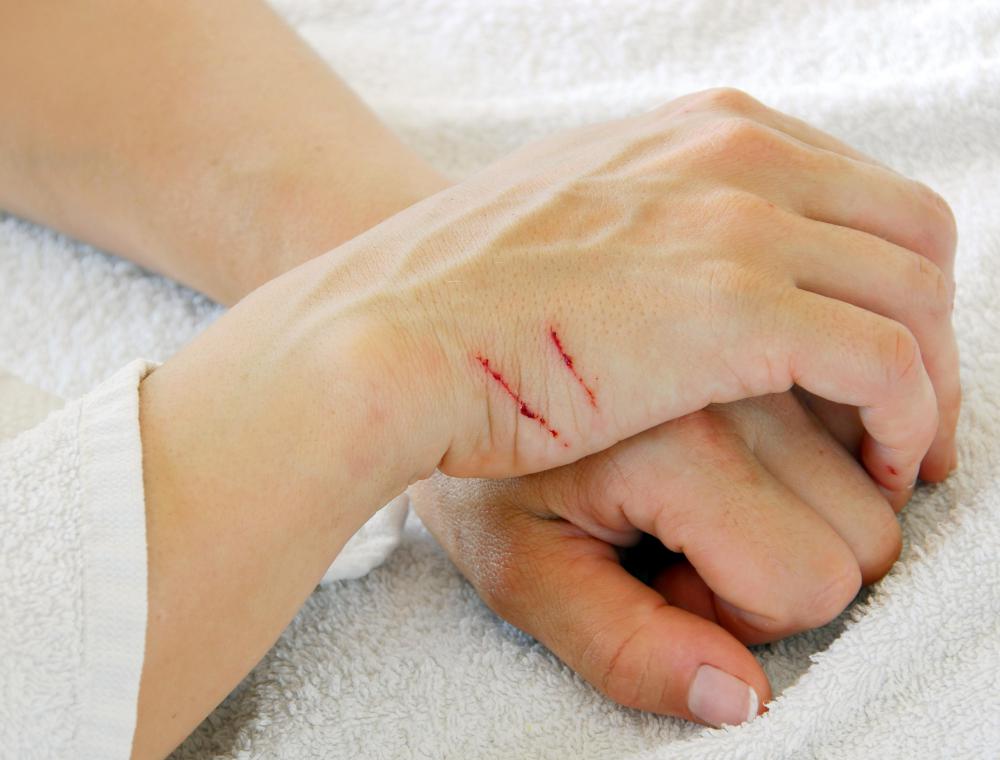At WiseGEEK, we're committed to delivering accurate, trustworthy information. Our expert-authored content is rigorously fact-checked and sourced from credible authorities. Discover how we uphold the highest standards in providing you with reliable knowledge.
What is Angiomatosis?
Angiomatosis is a benign vascular condition where patients develop clusters of blood vessels in various regions of the body. These are known as angiomas, and may vary in size and structure. The condition is usually self limiting, but can pose risks to patients when the vascular malformations are fragile. They could rupture and cause internal bleeding, as well as interruptions to the blood supply. A medical evaluation can determine the level of risk present and what, if any, steps are available for treatment.
Certain congenital conditions like Von Hippel-Lindau disease and Sturge-Weber syndrome are often accompanied with angiomatosis. In these patients, the blood vessels may fail to form properly or could be at increased risk for malformations. These can be internal or just beneath the surface of the skin, leading to discolorations and nodules where clumps of vessels are present. Other symptoms associated with the congenital disease can help narrow down the cause of the blood vessel malformations.

People can also develop angiomatosis in response to infections with bacteria in the genus Bartonella. These bacteria can be carried by fleas, ticks, and cats; “cat scratch fever” is a slang term for this infection. Individuals with healthy immune systems are usually able to fight off the bacteria successfully, but immune compromise as seen in patients with AIDS, cancers, and certain other conditions can make people vulnerable to infection. In these patients, angiomatosis lesions can appear around breaks in the skin caused by insect bites and cat scratches.
These growths are not malignant, and they will not spread to other regions of the body or start eating into neighboring tissue. They can pose health problems in some patients by rupturing, putting pressure on tissue structures in the area, or causing pain and irritation. In these patients, a doctor may recommend treatments like surgery to remove malformations or to reroute the blood supply around the tangle of vessels with the goal of preventing problems. This surgery can be performed by a vascular specialist who focuses on treating blood vessel disorders.
People with a history of angiomatosis should take note of any changes in their condition. If growths appear to be growing larger or symptoms like pain and fatigue develop, the patient may be experiencing a problem. The patient should go to the doctor for an evaluation to discuss the changes and explore possible treatment options, including surgery. Failure to treat in a timely fashion may result in complications.
AS FEATURED ON:
AS FEATURED ON:











Discuss this Article
Post your comments